Rasna Madhur
Advisor: Lancelot Coar and Ralph Stern
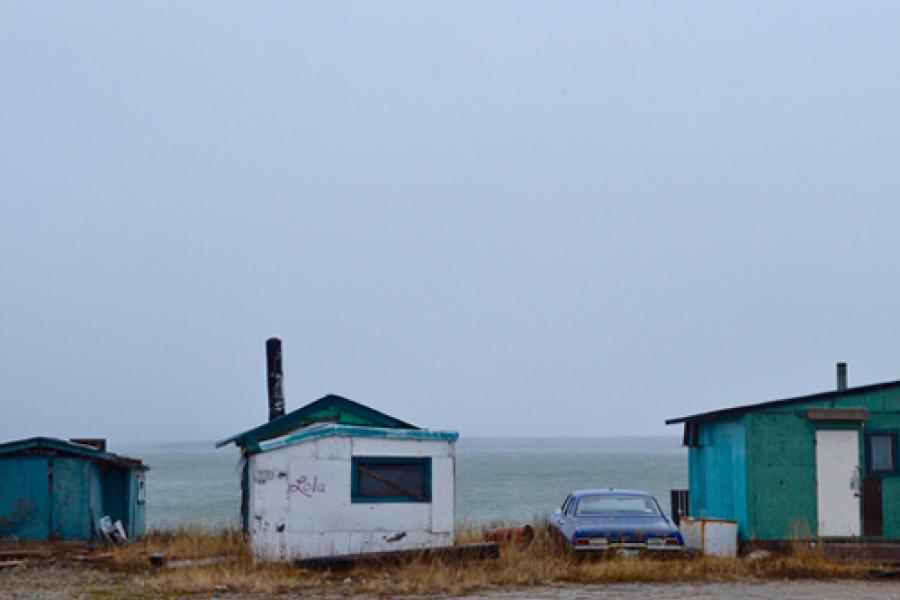
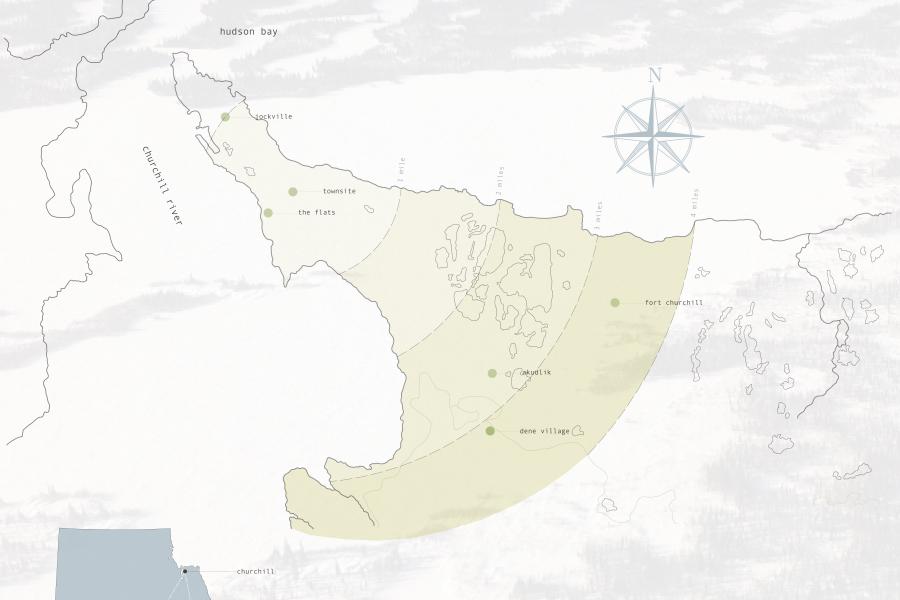

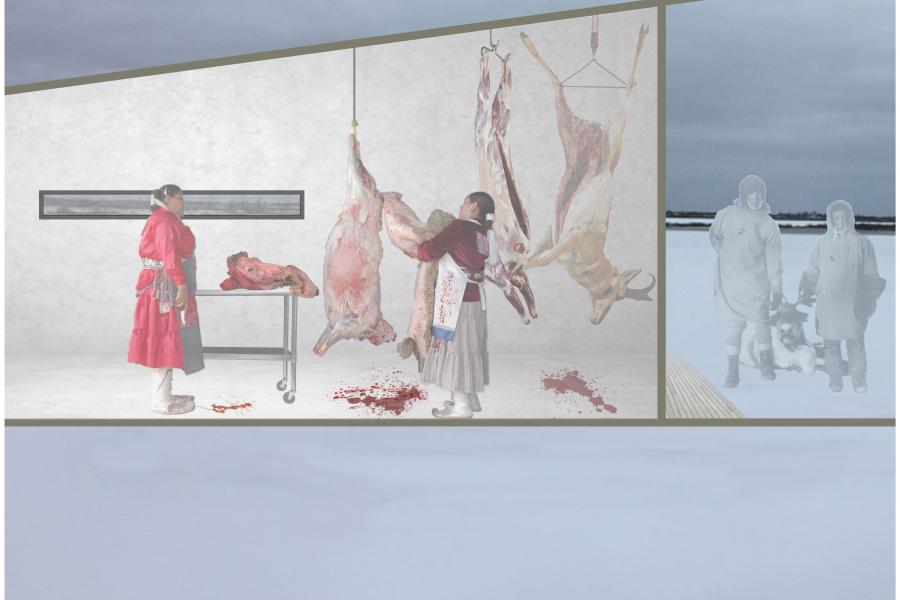
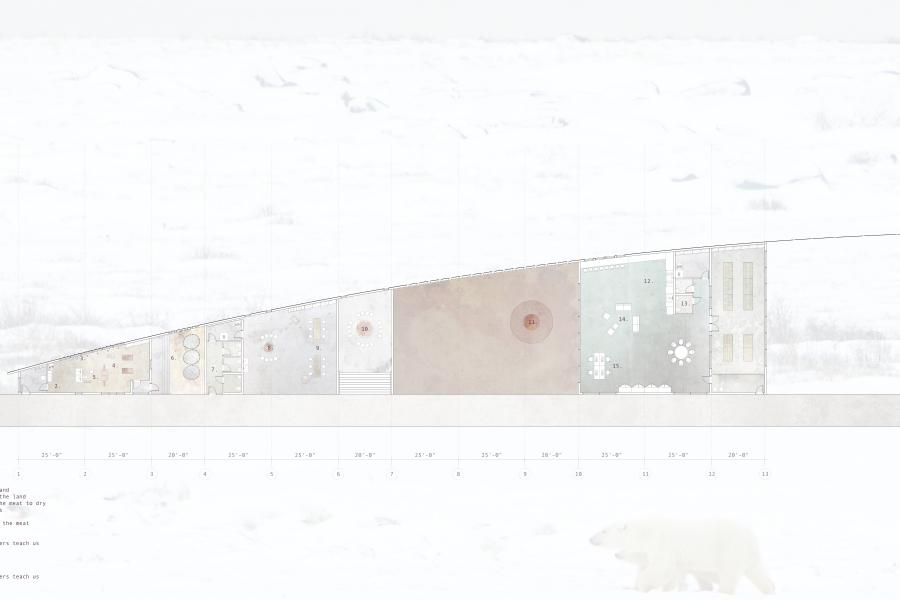
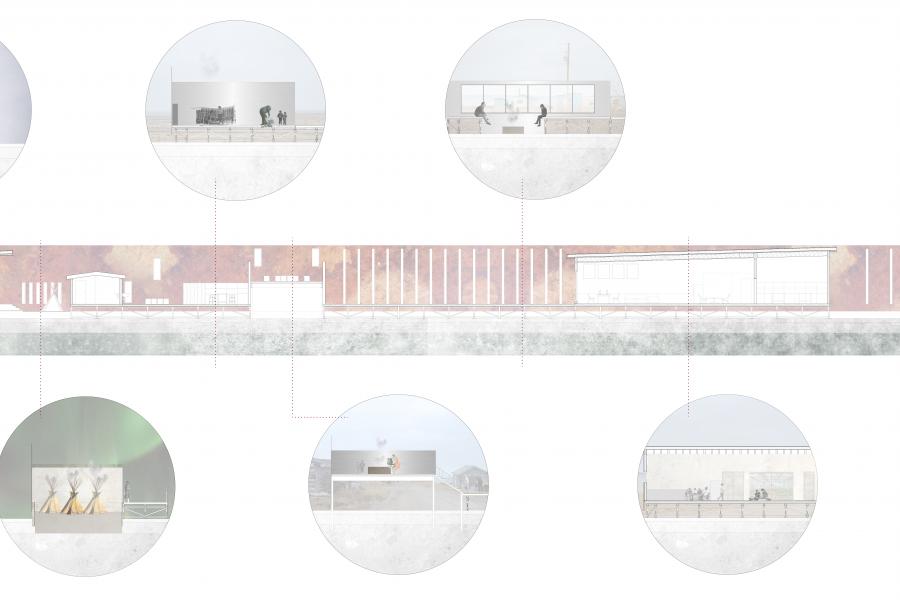
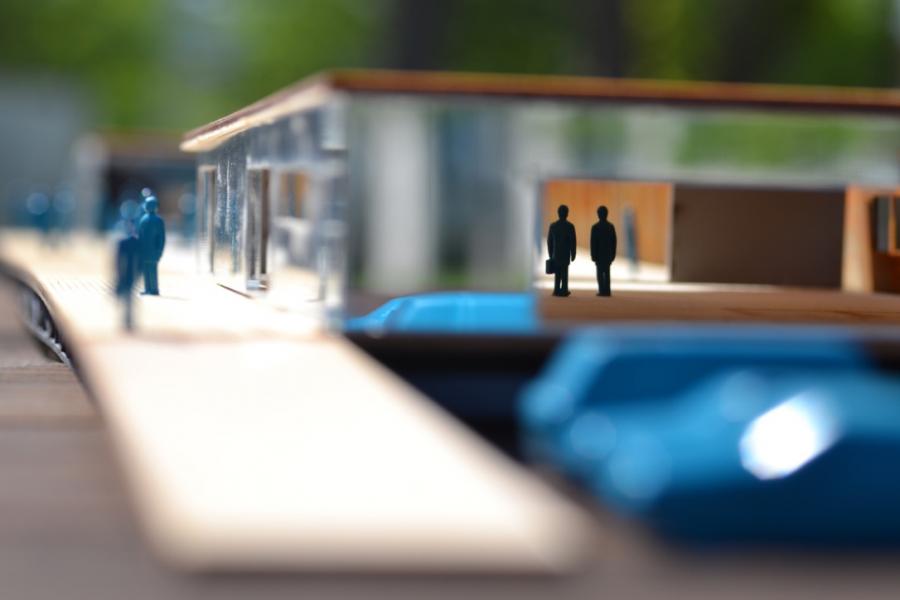
Dene: [De]Constructed
‘Near’ is a place to which I can get quickly on my feet, not a place to which the train or air-ship will take me quickly. ‘Far’ is a place to which I cannot get quickly on my feet… Man is the measure. That was my first lesson. Man’s feet are the measure for distance, his hands are the measure for ownership, his body is the measure for all that is lovable and desirable and strong.
(Raskin 1954: 36, citing E.M. Forster’s Collected Tales)
Churchill, is a town in northern Manitoba located on the shore of Hudson Bay. This small community has an overall population of under 1,000 people, of whom approximately 50% are of Cree, Inuit and Dene descent.
On August 17, 1956 Government planes arrived in Little Duck Lake where the Dene people, long known as caribou hunters traditionally lived, and they were “herded … onboard and then [flown] to the barren tundra outside Churchill,” where they could no longer follow and hunt the caribou.1 They were forced to live in poorly constructed homes, that were not conducive to their traditional lifestyle. These hunters struggled to find other forms of work. Drugs, alcohol and abuse rapidly became common occurrences in the community and the Dene did not integrate well with the traditions, culture and lifestyle of existing residents in Churchill. The Dene people had been nomadic but were forced into a sedentary life where they were unable to find a place to feel at home. “By 1969, the talk of leaving Dene Village and the forced-relocation became action and some members left by foot to find better land.”2 Although many Dene people relocated to Tadoule Lake, some still remained in Churchill.
Currently in northern communities, many still desire traditional skills and knowledge such as surviving in the wild, hunting, cooking game meat, building shelters, making clothing and finding a way to make an income and support their families. Most importantly, they must learn to do so with the limited resources available to them.
Taking advantage of the vast open space along the shoreline of the Churchill River, this thesis intends to bring residents and tourists together in a space, where collectively they can celebrate the Dene culture while passing on many of their traditions and practices. The Dene people who experienced the relocation and segregation are extremely reluctant to discuss their past. It is an ongoing struggle and many families are still trying to deal with the effects of the displacement. This design intervention will provide the Dene people a space where different generations can come together and practice aspects of the life that they knew and left behind. This site provides both interior and exterior gathering spaces where individuals and groups can skin animals, work on animal hides, smoke meat, practice traditional arts and crafts, sing, dance and continue to share stories.
1. Kelly Malone, "Manitoba's Sayisi Dene: Forced relocation, racism, survival," CBC News, last modified August 16, 2016, accessed December 18, 2016, http://www.cbc.ca/news/canada/manitoba/manitoba-sayisi-dene-relocation-1.3722564.
2. Ibid.
